If you’re after the best MacBook Pro models for data science and AI in 2025, I recommend focusing on the latest M5-powered options, especially those with high CPU and GPU cores like the M4 Max and M4 Pro variants. The 14 and 16-inch models offer excellent displays, fast storage, and ample RAM for intensive tasks. Keep in mind portability versus power—more advanced models weigh more. If you continue exploring, you’ll find the perfect match for your needs.
Key Takeaways
- Top models feature the latest M4 Max chip with powerful GPU, Neural Engine, and high core counts for intensive AI and data processing.
- High-resolution Liquid Retina XDR displays with ProMotion ensure vibrant, smooth visuals ideal for data visualization and creative tasks.
- Configurations offering up to 128GB RAM and fast SSD storage optimize large dataset handling and multitasking performance.
- Multiple Thunderbolt 4/5, HDMI, and SDXC ports support external displays and high-speed data transfer for professional workflows.
- 14-inch and 16-inch models balance portability with maximum power, catering to demanding AI workloads and long work sessions.
Apple 2025 MacBook Pro Laptop with M5 Chip

If you’re into data science or AI, the Apple 2025 MacBook Pro with the M5 chip is a game-changer. Its 14.2-inch Liquid Retina XDR display offers stunning visuals with high brightness and incredible contrast, perfect for detailed data visualization. Powered by the 10-core CPU and GPU, along with Neural Accelerators, it handles complex computations and AI tasks effortlessly. With 16GB of unified memory and 512GB SSD storage, multitasking feels smooth and responsive. The all-day battery life keeps you productive on the go, while seamless integration with Apple’s ecosystem enhances your workflow. It’s a powerful, versatile tool for serious data professionals.
Best For: data scientists, AI professionals, and creative developers seeking a powerful, portable laptop with exceptional display quality and seamless Apple ecosystem integration.
Pros:
- Stunning 14.2-inch Liquid Retina XDR display with high brightness and contrast for detailed visuals
- Powerful M5 chip with 10-core CPU and GPU, ideal for complex computations and AI tasks
- Long-lasting battery life and versatile connectivity options, including Thunderbolt 4 and HDMI ports
Cons:
- Limited to 16GB of unified memory, which may be restrictive for highly intensive multitasking
- Premium price point might be a barrier for budget-conscious users
- Limited to 512GB SSD storage, which could require external storage solutions for large data sets
Apple 2024 MacBook Pro Laptop with M4 Chip

The Apple 2024 MacBook Pro with M4 chip stands out as an ideal choice for data scientists and AI professionals who need powerful performance combined with stunning display quality. Its 14.2-inch Liquid Retina XDR display offers vibrant colors, deep contrast, and peak brightness of 1600 nits, perfect for visualizing complex data. Powered by the 10-core M4 chip with a 10-core GPU and 16 or 24GB of unified memory, it handles demanding tasks effortlessly. With up to 24 hours of battery life, multiple ports—including Thunderbolt 4, HDMI, and SDXC—and high-quality audio and camera, this MacBook Pro delivers both performance and versatility in a sleek design.
Best For: data scientists, AI professionals, and creative professionals seeking powerful performance with stunning display quality in a portable design.
Pros:
- Exceptional 14.2-inch Liquid Retina XDR display with high brightness and vivid colors
- Powerful M4 chip with 10-core CPU and GPU for demanding workloads
- Long-lasting battery life of up to 24 hours for extended work sessions
Cons:
- Premium price point may be costly for some users
- Limited upgradeability with fixed RAM options
- Heavy reliance on external ports for certain peripherals
Apple 2024 MacBook Pro Laptop with M4 Pro, 12-core CPU, 16-core GPU
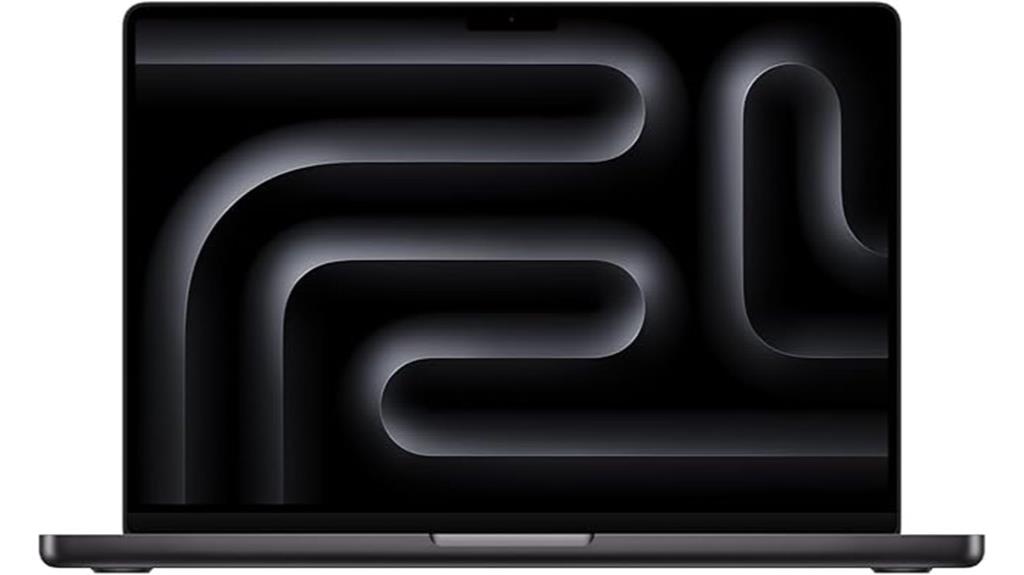
For data scientists and AI professionals seeking portable power, the Apple 2024 MacBook Pro with M4 Pro, 12-core CPU, and 16-core GPU stands out as an exceptional choice. It offers high performance with its advanced M4 Pro chip, capable of handling demanding workloads like compiling large codebases and rendering complex visuals. The 14.2-inch Liquid Retina XDR display delivers stunning visuals with up to 1600 nits peak brightness, perfect for analyzing detailed data. Coupled with 24GB of unified memory and a fast 512GB SSD, this laptop ensures smooth multitasking and quick data access. Its all-day battery life keeps you productive on the go, making it ideal for intensive data science and AI projects.
Best For: data scientists and AI professionals seeking a portable, high-performance laptop for demanding workloads and detailed data analysis.
Pros:
- Powerful M4 Pro chip with 12-core CPU and 16-core GPU for handling intensive tasks
- Stunning 14.2-inch Liquid Retina XDR display with up to 1600 nits brightness for clear visuals
- Long-lasting all-day battery life supports productivity on the go
Cons:
- Premium price may be prohibitive for some users
- Limited 512GB SSD storage might require external drives for large datasets
- Heavy and bulky compared to ultraportable laptops
Apple MacBook Pro 2024 with M4 Max (16-Inch, 48GB RAM, 1TB SSD, Space Black)

Powerful and versatile, the Apple MacBook Pro 2024 with M4 Max is an ideal choice for data scientists and AI professionals who demand top-tier performance. Its M4 Max chip features a 16-core CPU, 40-core GPU, and a 16-core Neural Engine, enabling lightning-fast code compilation, complex data analysis, and 3D rendering. With 48GB of unified memory (expandable to 128GB) and a 1TB SSD, it handles large datasets effortlessly. The 16.2-inch Liquid Retina XDR display offers stunning visuals with HDR support, while multiple Thunderbolt 5 ports support extensive external displays and peripherals. This laptop balances power, display quality, and connectivity, making it perfect for demanding AI and data science tasks.
Best For: power users such as data scientists, AI professionals, and creative professionals who require high performance, large memory, and excellent display quality for demanding tasks.
Pros:
- Exceptional processing power with M4 Max chip, ideal for intensive workloads like data analysis and 3D rendering.
- Large, stunning 16.2-inch Liquid Retina XDR display with high brightness, HDR support, and adaptive refresh rate.
- Extensive connectivity options including multiple Thunderbolt 5 ports, HDMI, SDXC slot, and support for multiple external displays.
Cons:
- Premium price point may be prohibitive for some users.
- Heavier and bulkier compared to other laptops, which could affect portability.
- Limited to macOS, which might not suit users needing Windows or Linux environments.
Apple 2024 MacBook Pro Laptop with M4 Max

If you’re working with complex data sets or training AI models, the 2024 MacBook Pro with M4 Max is an ideal choice thanks to its impressive hardware. It features a powerful M4 Max chip with a 14-core CPU, a 32-core GPU, and a 16-core Neural Engine, delivering exceptional performance for demanding tasks. With up to 36GB of unified memory and configurable options for even higher specs, it handles 3D rendering, coding, and creative workflows effortlessly. The 14.2-inch Liquid Retina XDR display offers stunning visuals and color accuracy, while the extensive connectivity options support multiple external displays and high-speed data transfer.
Best For: creative professionals, developers, and power users who require high-performance hardware for demanding workflows like 3D rendering, coding, and multimedia editing.
Pros:
- Exceptional processing power with the M4 Max chip, including a 14-core CPU, 32-core GPU, and 16-core Neural Engine
- Stunning 14.2-inch Liquid Retina XDR display with high brightness, color accuracy, and ProMotion technology
- Extensive connectivity options supporting multiple external displays and high-speed data transfer
Cons:
- Premium price point may be prohibitive for some users
- Relatively heavy and thick for a portable laptop at 3.56 pounds and 0.61 inches thick
- Limited upgradeability post-purchase due to integrated design and hardware configurations
Apple MacBook Pro Laptop with M4 Pro, 14-inch Liquid Retina XDR Display
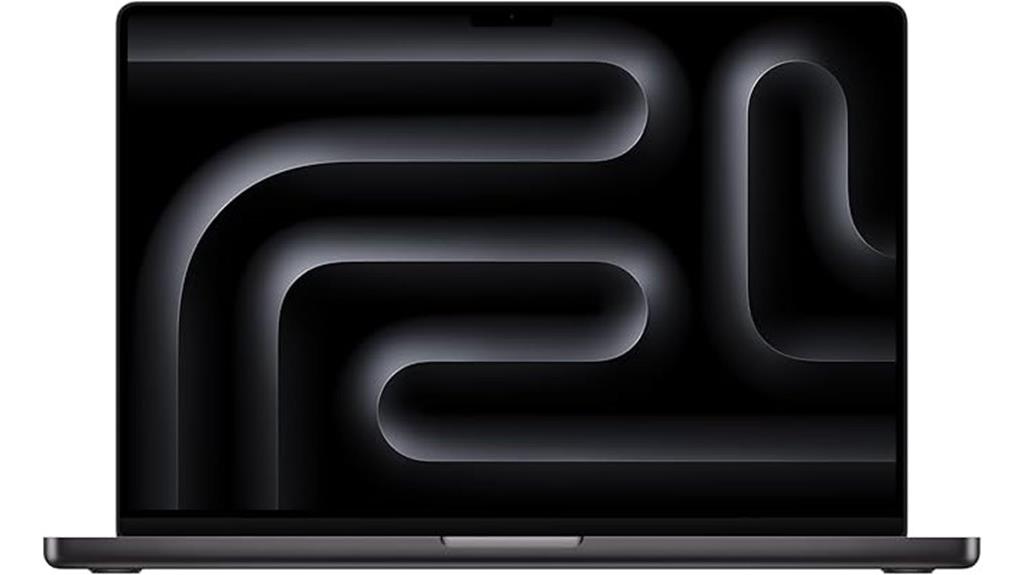
The Apple MacBook Pro with M4 Pro and a 14-inch Liquid Retina XDR display stands out as an ideal choice for data scientists and AI professionals who demand exceptional performance and stunning visuals. Its powerful 14-core CPU and 20-core GPU handle demanding tasks with ease, whether running complex models or intensive workflows. The 16.2-inch display offers up to 1600 nits brightness and a 1,000,000:1 contrast ratio, delivering vibrant, detailed visuals. With all-day battery life and seamless integration into the Apple ecosystem, it’s perfect for multitasking, creative work, and on-the-go productivity. This MacBook Pro truly balances power, display quality, and portability.
Best For: data scientists and AI professionals seeking a high-performance, visually stunning laptop for demanding workflows and creative tasks.
Pros:
- Exceptional processing power with 14-core CPU and 20-core GPU for demanding applications
- Stunning 16.2-inch Liquid Retina XDR display with high brightness and contrast for vibrant visuals
- Seamless integration within the Apple ecosystem enhances multitasking and productivity
Cons:
- Premium price point may be prohibitive for some users
- Limited upgradeability due to Apple’s integrated design
- Potential overkill for users with basic computing needs
Apple 2023 MacBook Pro with M3 Max (16-Inch, 36GB RAM, 1TB SSD, Space Black, Renewed)
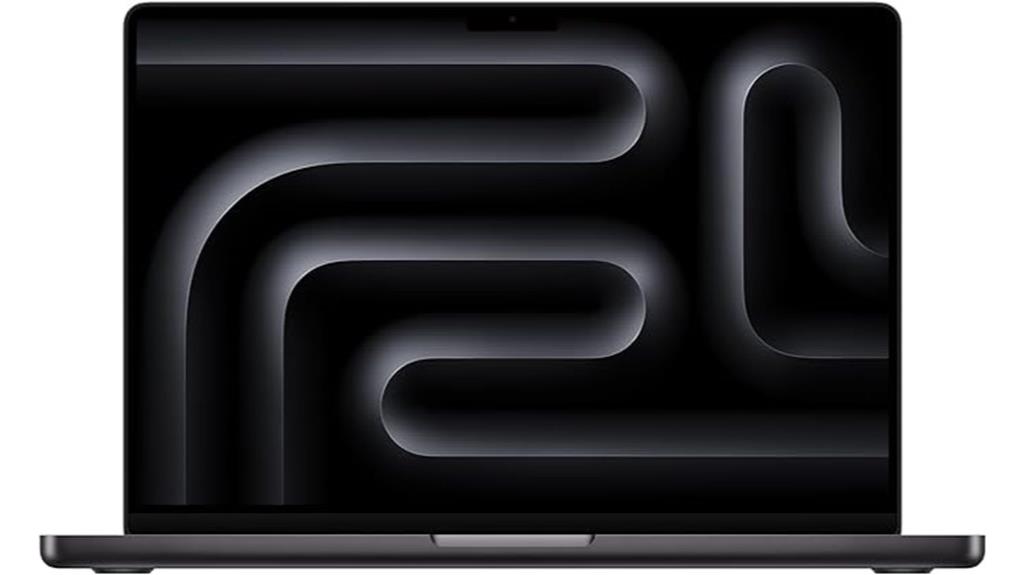
For data scientists and AI developers seeking high performance on a budget, the Apple 2023 MacBook Pro with M3 Max stands out as an excellent choice. This 16-inch model features the powerful M3 Max chip, 36GB of RAM, and a 1TB SSD, delivering impressive speed and multitasking capabilities. It’s renewed but inspected and tested to guarantee quality, with a battery that exceeds 80% capacity. The Space Black finish adds a sleek look, and while accessories may not be original, they are fully compatible. If you need top-tier performance without paying full price, this MacBook Pro offers a compelling balance of power and value.
Best For: data scientists, AI developers, and power users seeking high-performance computing on a budget with a sleek, professional design.
Pros:
- High-performance M3 Max chip with 36GB RAM for multitasking and demanding applications
- Large 16-inch display ideal for detailed data analysis and coding
- Renewed condition with verified quality and a battery exceeding 80% capacity
Cons:
- Not Apple certified, which may affect resale value or warranty options
- Accessories may not be original, potentially impacting user experience or aesthetics
- Comes in generic packaging, which might be less appealing than new retail packaging
Apple 2024 MacBook Pro with M4 Max Chip, 16-inch, 36GB RAM, 1TB SSD, Silver (Renewed)
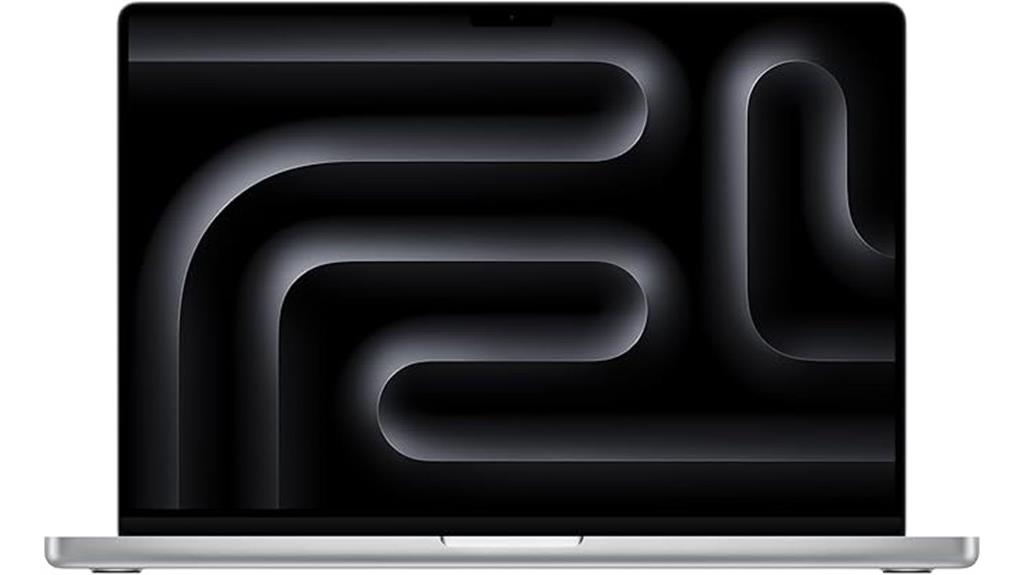
With its powerful M4 Max chip, 16-inch display, and 36GB of RAM, the Apple 2024 MacBook Pro is an excellent choice for data scientists and AI practitioners who need to handle demanding workloads. It offers all-day battery life, a Liquid Retina XDR display with 1600 nits peak brightness, and up to 3456×2234 resolution for crisp visuals. The M4 Max handles intensive tasks like 3D rendering and coding, while the 1TB SSD ensures fast data access. Its connectivity options include Thunderbolt 5, HDMI, SDXC slot, and MagSafe, supporting multiple external displays. This renewed model combines high performance with seamless Apple ecosystem integration.
Best For: data scientists, AI practitioners, and creative professionals who require high-performance computing and vibrant display quality.
Pros:
- Powerful M4 Max chip with 36GB RAM for demanding workloads
- Stunning Liquid Retina XDR display with high brightness and resolution
- Seamless integration with the Apple ecosystem and multiple external display support
Cons:
- Renewed model may have limited warranty or unknown long-term reliability
- High price point compared to non-renewed or less powerful laptops
- Slightly heavy at 4.73 pounds, less portable for on-the-go use
Apple 2025 MacBook Pro Laptop with M5 Chip

If you’re working on demanding AI and data science projects, the Apple 2025 MacBook Pro with M5 chip is an excellent choice due to its powerful 10-core CPU and GPU, along with hardware-accelerated AI engines. It features a 16-core Neural Engine and Neural Accelerators, supporting next-generation speed and on-device AI tasks. With 16GB unified memory, a 1TB SSD, and advanced video decode/encode engines, it handles large datasets and complex workloads efficiently. The 14.2-inch Liquid Retina XDR display delivers stunning visuals, while its impressive battery life and extensive ports make it a versatile, high-performance tool for professional data science and AI applications.
Best For: professionals and researchers working on demanding AI, data science, and creative workloads who need a high-performance, portable laptop with advanced graphics and processing capabilities.
Pros:
- Powerful 10-core CPU and GPU with hardware-accelerated AI engines for demanding tasks
- Stunning 14.2-inch Liquid Retina XDR display with high brightness and color accuracy
- Extensive port selection including Thunderbolt 4, HDMI, SDXC card slot, and MagSafe for versatile connectivity
Cons:
- Premium price point may be out of reach for casual users
- Limited to 16GB unified memory, which may be insufficient for some heavy multitasking or large datasets
- Heavy and potentially less portable compared to smaller ultrabooks
Apple 2024 MacBook Pro Laptop with M4 Max (14.2-inch Liquid Retina XDR, 36GB RAM, 1TB SSD, Silver)

The Apple 2024 MacBook Pro with M4 Max stands out as an ideal choice for data scientists and AI professionals who demand top-tier performance and stunning visuals. Its 14.2-inch Liquid Retina XDR display delivers vibrant images with 3024×1964 resolution, perfect for detailed data visualization. Powered by the M4 Max chip, it offers a 14-core CPU, 32-core GPU, and 36GB of RAM, ensuring fast processing and multitasking. With a 1TB SSD, it handles large datasets efficiently. Its robust connectivity options support multiple external displays, while the long battery life keeps you working seamlessly. This machine combines power, portability, and exceptional display quality for advanced data and AI work.
Best For: professionals in data science and AI who require high-performance computing, vibrant visuals, and seamless multitasking capabilities.
Pros:
- Exceptional performance with M4 Max chip, 14-core CPU, and 32-core GPU for demanding tasks
- Stunning 14.2-inch Liquid Retina XDR display ideal for detailed data visualization
- Long battery life supporting extended work sessions and multiple external displays
Cons:
- Premium price point may be prohibitive for some users
- Slightly heavy at 3.56 pounds, which could impact portability for some
- Limited to macOS, which may not suit users needing Windows-based software or environments
Apple 2024 MacBook Pro Laptop with M4 Pro
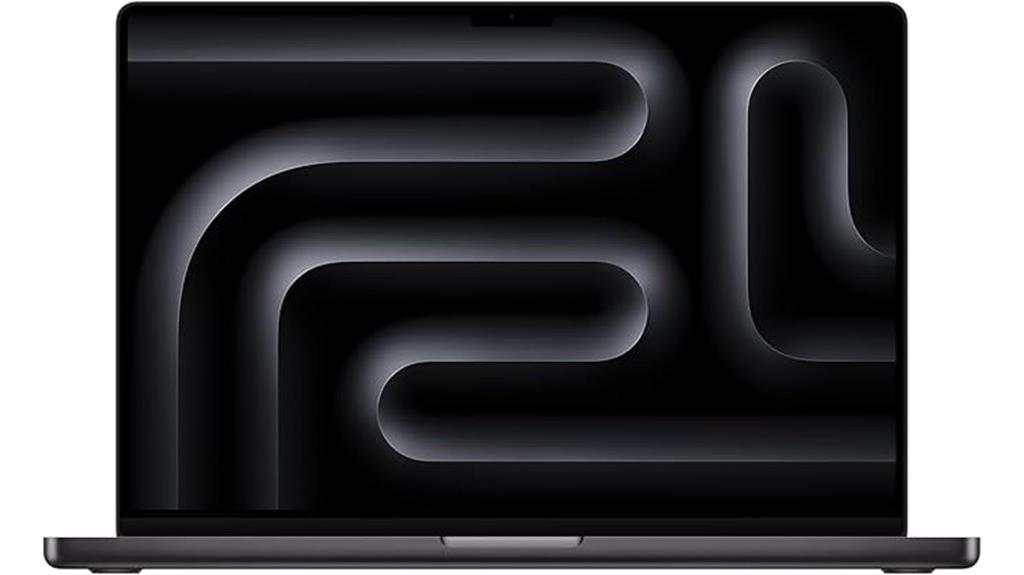
Are you a data scientist or AI researcher seeking a powerful, portable workstation? The 2024 MacBook Pro with M4 Pro is an excellent choice. It handles demanding tasks like compiling large codebases effortlessly, thanks to its high-performance M4 Pro chip. The 16.2-inch Liquid Retina XDR display offers stunning visuals with up to 1600 nits brightness, perfect for data visualization. With support for two external displays, 24GB of unified memory, and all-day battery life, it’s built for intensive workflows. Plus, its seamless integration with the Apple ecosystem makes multitasking across devices smooth and efficient. This MacBook Pro is a top-tier tool for data science and AI work.
Best For: professionals in data science, AI research, and creative workflows seeking a powerful, portable laptop with high-performance chips and a stunning display.
Pros:
- High-performance M4 Pro chip handles demanding tasks effortlessly
- Vibrant 16.2-inch Liquid Retina XDR display with up to 1600 nits brightness
- Seamless integration with the Apple ecosystem for multitasking and productivity
Cons:
- Premium price point may be a barrier for some users
- Limited to 512GB SSD storage standard, which might require upgrades for extensive data needs
- Heavier than some ultraportable laptops, potentially affecting portability for some users
Apple 2024 MacBook Pro Laptop with M4 Max

For data scientists and AI professionals demanding top-tier performance, the Apple 2024 MacBook Pro with M4 Max stands out with its powerful hardware and advanced graphics capabilities. It features the M4 Max chip, a 14-core CPU, a 32-core GPU, and 36GB of unified memory, making it ideal for complex workflows like 3D rendering and machine learning. The 16.2-inch Liquid Retina XDR display offers stunning visuals with high brightness and contrast. With up to four external displays, all-day battery life, and seamless integration with macOS apps, it’s designed to handle intensive tasks while maintaining portability and user-friendly features.
Best For: data scientists and AI professionals seeking top-tier performance for demanding workflows like machine learning, 3D rendering, and complex data analysis.
Pros:
- Powerful M4 Max chip with a 14-core CPU and 32-core GPU ensures exceptional performance.
- Large 36GB unified memory supports intensive multitasking and large datasets.
- Stunning 16.2-inch Liquid Retina XDR display with high brightness and contrast for accurate visuals.
Cons:
- Premium price point may be a barrier for some users.
- Heavy and large design could impact portability for some users.
- Limited upgradeability due to sealed design and integrated components.
Apple 2025 MacBook Pro Laptop with M5 Chip

If you’re working with demanding data science or AI workloads, the Apple 2025 MacBook Pro with M5 chip stands out thanks to its powerful 10-core CPU and GPU, along with hardware-accelerated ray tracing. Its 14.2-inch Liquid Retina XDR display delivers stunning visuals with 3024×1964 resolution, 1,600 nits brightness, and ProMotion technology for smooth performance. With 24GB of unified memory, 1TB SSD, and support for multiple external displays, it handles large datasets and complex models effortlessly. The M5 chip’s neural engine and accelerators boost AI tasks, while the battery life of up to 24 hours keeps you productive all day.
Best For: creative professionals, data scientists, and AI developers who need high-performance computing, stunning visuals, and long battery life in a portable design.
Pros:
- Powerful 10-core M5 chip with advanced GPU and neural engine for demanding workloads
- Bright, high-resolution Liquid Retina XDR display with ProMotion for smooth visuals
- Long battery life of up to 24 hours supports all-day productivity
Cons:
- Premium price point may be prohibitive for some users
- Limited to a maximum of two external displays, which may constrain multi-monitor setups
- Heavier than some ultraportables at 3.41 pounds, affecting portability for certain users
Factors to Consider When Choosing a Macbook Pro for Data Science and AI

When selecting a MacBook Pro for data science and AI, I focus on processing power, RAM, and GPU performance to handle demanding tasks efficiently. Storage speed and capacity are also vital for managing large datasets, while a clear, appropriately sized display helps with complex analyses. Considering these factors guarantees I choose a model that meets my specific workload needs effectively.
Processing Power Needs
Choosing the right MacBook Pro for data science and AI requires prioritizing processing power, as these tasks demand significant computational resources. High-core-count processors, like 10-core or more CPUs, are vital for efficiently handling complex calculations and data processing. A powerful GPU, with at least 10 cores, accelerates machine learning model training and large-scale data tasks. Neural Engines or dedicated AI accelerators further boost performance for deep learning workloads. Additionally, having sufficient RAM—16GB or more—is essential to manage large datasets and run multiple processes smoothly. Hardware-accelerated video decode/encode engines also improve efficiency when working with multimedia data involved in AI workflows. Overall, investing in a MacBook Pro with robust processing capabilities ensures top performance for demanding data science and AI projects.
RAM Capacity Importance
Processing power is essential for data science and AI tasks, but without enough RAM, even the fastest hardware can bottleneck your workflow. Adequate RAM allows you to multitask efficiently and run large datasets or multiple AI models simultaneously without slowdown. For most data science and AI workloads, 16GB is the minimum, but 32GB or more is recommended for complex projects. Increasing RAM reduces reliance on disk swapping, which markedly speeds up processing during intensive computations. It also enables smoother handling of large machine learning models, high-resolution data, and real-time data streams. Sufficient RAM ensures your system can support advanced frameworks like TensorFlow and PyTorch, which demand substantial memory resources. In short, RAM capacity is a key factor in maintaining efficiency and productivity in data science and AI workflows.
GPU Performance Significance
GPU performance plays a fundamental role in accelerating deep learning training and AI inference, making it a key factor in selecting a MacBook Pro for data science. A powerful GPU with higher core counts and advanced architecture allows for faster parallel processing of large datasets, which is essential for efficient model training. Features like hardware-accelerated ray tracing and AI-specific cores boost performance in visualizations and AI inference tasks. Larger VRAM capacities enable handling bigger models and datasets without memory bottlenecks, ensuring smoother workflows. Additionally, support for multiple high-resolution external displays is essential for data visualization and real-time analysis. Overall, investing in a MacBook Pro with robust GPU capabilities directly impacts your ability to process complex data and run AI algorithms effectively.
Storage and Speed
When selecting a MacBook Pro for data science and AI, storage speed and capacity often determine how smoothly your workflow runs. Faster SSDs with higher read/write speeds cut down data processing times, which is vital for large datasets and complex models. NVMe SSDs, in particular, outperform traditional drives, providing rapid data access for intensive tasks. Large storage capacity ensures you can store extensive datasets and multiple models without sacrificing performance. High-speed interfaces like Thunderbolt 4 and USB-C facilitate quick transfers of big files between devices and external storage, saving valuable time. When combined with ample RAM, fast storage minimizes bottlenecks, enabling seamless multitasking and efficient handling of demanding computations. Prioritizing these factors guarantees your MacBook Pro meets the rigorous demands of data science and AI work.
Display Clarity and Size
A larger display size, such as 14.2 inches or more, substantially enhances your ability to view and analyze complex data and code simultaneously. It provides more screen real estate for multitasking and detailed visualizations, which are vital in data science and AI work. High display resolution, like 3024×1964 or higher, guarantees sharpness and clarity, making it easier to interpret detailed graphics and precise text. Support for a billion colors and wide color gamuts boosts the vibrancy and accuracy of visual data representations. Features like ProMotion technology, with refresh rates up to 120Hz, offer smooth interactions and reduce eye strain during long sessions. A high contrast ratio, such as 1,000,000:1, further enhances the visibility of dark and bright details, aiding in accurate data interpretation.
Connectivity Options
Connectivity options play a critical role in optimizing your MacBook Pro for data science and AI tasks. Multiple Thunderbolt 4 or 5 ports ensure high-speed data transfer, which is indispensable when handling large datasets or connecting external GPUs. An SDXC card slot allows quick access to raw data stored on SD cards, streamlining data transfer. HDMI ports enable direct connection to external displays, essential for multitasking and monitoring complex AI models or data visualization. Support for up to four external displays, especially with M4 Max chips, provides ample workspace for coding, analysis, and visualization simultaneously. Additionally, USB-C ports with fast charging capabilities keep your workflow uninterrupted by quickly recharging your MacBook Pro during intensive tasks. These connectivity options collectively enhance your efficiency and productivity in demanding data science and AI environments.
Privacy and Ecosystem
Choosing a MacBook Pro for data science and AI means prioritizing not only performance but also security and seamless integration within the Apple ecosystem. Robust privacy features like data encryption, the Secure Enclave, and advanced sandboxing protect sensitive data throughout AI workflows. These protections guarantee your project information remains secure from unauthorized access. The integration within Apple’s ecosystem enables smooth, secure sharing of data and results across devices, simplifying collaboration. Encrypted iCloud storage and secure communication tools like Messages and FaceTime help maintain data confidentiality. Additionally, macOS privacy controls let you customize app permissions and monitor data access, promoting responsible data handling. Overall, prioritizing privacy and ecosystem integration enhances both the security and efficiency of your data science and AI projects on a MacBook Pro.
Frequently Asked Questions
How Do Macbook Pro Models Compare in Ai-Specific Hardware Acceleration?
MacBook Pro models excel in AI-specific hardware acceleration, especially with the M2 Pro and M2 Max chips. I’ve found their integrated Neural Engines and GPU cores markedly speed up machine learning tasks. The newer models provide better performance, thanks to more cores and advanced optimization, making them ideal for AI work. I’d recommend choosing the latest versions for the best hardware acceleration and future-proofing your data science projects.
Which Macbook Pro Offers the Best Battery Life for Intensive Data Tasks?
I find the MacBook Pro with the M2 Max chip offers the best battery life for intensive data tasks. Its efficient power management lets me work longer without constantly searching for outlets, even during demanding data processing. The combination of a large battery and optimized hardware means I can run complex analyses or train models for hours without interruption, making it ideal for data-heavy work on the go.
Are There Compatibility Issues With Popular Data Science Software on New Macs?
Compatibility concerns can cause confusion, but I’ve found that most popular data science software seamlessly supports the latest Macs. While some specialized tools may need updates or workarounds, developers are continuously updating applications to match new macOS environments. I recommend checking specific software requirements before buying. Rest assured, with a little research, you’ll find your data-driven dreams don’t have to be hampered by compatibility hiccups.
How Does Thermal Performance Impact Prolonged AI Model Training Sessions?
Thermal performance critically impacts prolonged AI model training sessions because effective heat dissipation keeps the MacBook running smoothly without throttling. When the device overheats, it slows down to protect its components, which hampers training efficiency. I’ve noticed that models with better cooling, like the newer MacBook Pros, maintain peak performance longer, making them ideal for intensive tasks like AI training where consistent power is essential.
What Are the Upgrade Options for Storage and RAM in Future Macbook Pro Models?
Imagine revealing new potential—future MacBook Pros will likely offer customizable storage and RAM options, much like a toolbox ready for any challenge. Apple’s trend suggests you’ll be able to upgrade storage via removable SSDs and choose higher RAM configurations at purchase. While upgrades might be limited post-purchase, staying flexible with initial specs guarantees your device keeps pace with demanding data science and AI tasks.
Conclusion
If you’re serious about conquering data science and AI in 2025, these MacBook Pro models are nothing short of revolutionary! They’re like supercomputers disguised as laptops, capable of handling the most mind-boggling workloads with ease. Trust me, choosing one of these will elevate your work to levels you never thought possible—it’s like having a rocket engine in your hands. Don’t settle for less—gear up with the best and unleash your true potential!









